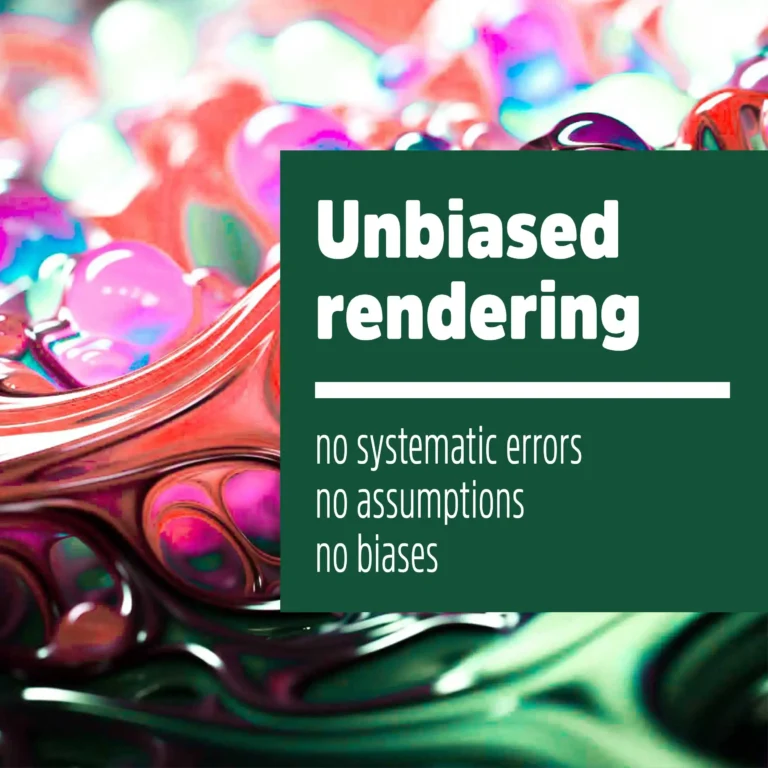Unbiased Rendering in Computer Graphics
An unbiased rendering technique ignores systematic errors, assumptions, or bias in computer graphics. As a result, the image is obtained as it should be in real life. An unbiased rendering software does not include surface quality or light source settings. As a result, unbiased rendering always processes all data and performs all calculations with very high accuracy.
Pros
- Relatively easy setup
- In terms of materials, lighting, and settings, everything is quite straightforward
- Unbiased rendering creates photorealistic results
Cons
- Low rendering speed
- Strong image noise in the early stages of rendering
- There is no way to influence the quality or accuracy of the render
Unbiased renders use Path Tracing with various optimizations. The more samples the rendering calculates per pixel, the more accurate the result will be. A pixel’s color is the arithmetic mean of the colors of all samples at that point. Samples are rays that, after passing through the path of reflections and refractions (from the camera to the light source), create the color of a particular pixel in the image.
The unbiased render can count samples indefinitely and stops only when it receives a command. Nevertheless, it is impossible to make a “perfect” picture, because it would take an infinite amount of time. When there is no visible noise, the rendering is considered complete (usually 1000 – 10000 samples per pixel, or 2-20 billion samples per FullHD image, in some cases even more). The more complex the ray path, the slower the noise disappears from the image.
Using graphics cards (GPU) for calculations is one way to solve the duration problem of unbiased rendering, or hybrid rendering (CPU/GPU) can be used.
In conclusion, unbiased rendering offers high accuracy in generating realistic images, but it demands substantial computational power. Increasing sample counts improves precision by reducing statistical variance and noise. Users must optimize sample counts to balance between accuracy and computational efficiency, striving for photorealistic results in computer graphics.
